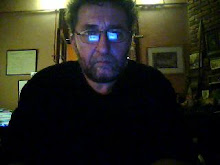Buenos Aires city has become very famous because of it's intense cultural life since the beginning of the t wentieth century. On the centennial of the city's foundation, Buenos Aires scene was restored and modernized, making of this amazing metropolis one of Latin America's most important cities, also worldly famous often compared to Paris and many other mayor European cities.
But it was specially during the 1960s when the Latin American cultural boom had a very strong impact world wide. Back then, Buenos Aires was the epicenter from where that trend expanded. Nouveau cultural and Art movements handed hand with the birth of many of the most important and prestigious Latin American intellectuals of all times. As all of them spread out and multiply, almost every Porteñan coffe house –barcitos- sheltered deep and outstanding art, philosophy and politics discussions. Young and not so young people gathered together at each corner of the city; they debated on their future as citizens, what to do with the world, discussed the cultural movement of the time… All this seemed unlimited! Hundred of cultural centers, bohemian bars filled this populous city, offering spaces for social and cultural debate. Everyone participated, not just porteños or Argentineans, but many Latin Americans who saw BA as the converging point of all these movements. Even many important European intellectuals came to Buenos Aires when seeking to debate their ideas as well as to share their thoughts and matters.
Just to make my point on what was Buenos Aires during the 60s: At that time, more than fifty cultural magazines were published bimonthly or every three months, printing more from 500 to 10,000 copies each of them.
Many groups of intellectuals used those magazines to show their thoughts and debate with the people. The content of them all expressed many diverse cultural and political ideas such as: Marxists, liberals, right wing peronists, left wing peronists, existentialists, Maoists, beats, artistic vanguard... each had their group, reunion place as well as their magazine, accessed by a large potion of society.
Because of this, within this movement of society, as a product of this social interest the Di Tella Institute was born, one of the most important cultural centers of Argentina's history. This was the mark of an era. It was very popular among youngsters, like a two way street of mutual influence.
It was by 1958 when, both, the Di Tella Institute and the foundation with the same name opened, but the golden years, locally and wold wide, where to become a few years latter.
The Vanguard art shown there draw the crowds to its doors. They held exhibits of more than 150,000 people.
We can say that the Di Tella Inst. Esthetically represented those “ideas rupturistas” (breakthrough) that were dominant among the people in general, and the intellectuals in particular. However, they were quite pluralists, so vigorous detractors had a place there too.
The esthetic shown at the Di Tella was the most successful attempt in the country, of bounding art with life, central vanguard art concept-idea.
At the peak of the Di Tella Institute, one and a half million dollars were donated by private corporations. They also had a public office on Florida peatonal street (one of the most important streets in Buenos Aires)and thousands of daily regular visitors.
The institute was named after one of Argentina's most prestigious businessman, who had past away ten years before its opening. It were his children, who decided to exhibit their father's lifetime art collection; they also were the ones who contacted the artists who would latter fill other showrooms with their new concepts and ideas, local as well as foreign.
Onganía's dictatorship censured most of the Institute's activities furthering and fastening the Di Tella Institute's end in the early 70s. Worldly famous artists and intellectuals such as Umberto Eco, Romero Brest, Marta Minujín, Nacha Guevara, Les Luthiers, Toulouse-Lautrec y Artaud among others gave birth to this one wonderfull and brief dream.
After the terrible military dictatorship during the 1970s, whose objective of killing any internal debate, including the ones in the cultural space, was achieved with much success. Therefore the result of that, was the idea of one possible way of thinking reality. This was achieved with repression as well as with fear induced to the population, as almost every artistic space was forced to shut down.
By the early 80s we returned to a very wounded democracy, that non the less created a much propitious context for a new cultural birth of Argentina.
Today, after many, many years, Argentina is returning to an improved cultural life, new cultural centers are coming to life daily, art museums, the rebirth of those once famous Porteñan cafes, bands of street musicians, the growth of artisans fairs as well as markets for collectors, the daily artistic street shows, as well as many more that are being held in theatres of Buenos Aires. All this is putting this city, once more in a central place within Latin American culture.
Every Barrio –neighborhood- is coming back to life, showing in every corner some cultural ambiance… even on the train, when traveling back and forth from work, passengers enjoy great folk music played by street musicians.
All this, plus this city's amazing architecture, blending the chick modern areas as Puerto Madero and Recoleta with the colonial Monserrat and San Telmo, adding some of the bohemian style of Palermo Viejo and the lights of Microcentro (downtown BA and the most famous Corrientes Av which was renamed as the Bookstore Av.) make of Buenos Aires a place one must visit at least once in a lifetime!

No comments:
Post a Comment